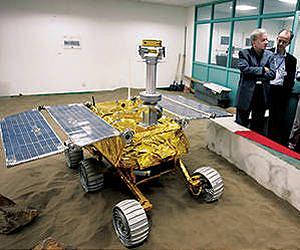The Changa 3 carrier rocket passed the first tests on the launch pad, and it was found that the launch pad, the control systems and the ground systems are ready for the mission.

Multiple "secret weapons" will be used on the Chinese Chang'e 3 spacecraft scheduled for launch at the end of the year to land on the moon. In doing so, China hopes to soft land a spacecraft on another celestial body for the first time. The spacecraft is already ready for launch at the end of the year from the Shichang Satellite Launch Center in southwest China.
In addition to several cameras, Changya-3 will also carry an ultraviolet telescope that will allow astronomers to observe stars, galaxies and the rest of the universe from the moon, said Ouyang Ziyuan, a senior adviser to China's lunar program.
"The telescope will examine the universe further and more clearly and may also provide new discoveries because it will not suffer from the disturbance of the Earth's atmosphere and ionosphere and will have an observation free from the interference of human activity accompanied by pollution, as well as from a magnetic field. Ouyang said.
According to him, the lander will also carry an extreme ultraviolet camera that will be used on the Moon for the first time to monitor the Earth's plasmasphere and examine the planet's environmental changes. Changa 3 will also carry an all-terrain vehicle that will roam the lunar surface. A radar will be installed on the underside of the vehicle that will be able to penetrate to a depth of 100-200 meters below the surface of the moon.
"The Changa 3 mission makes use of a wide variety of innovative technologies. It will be a difficult mission and it carries a lot of risk," said Ma Jingrui, head of China's space exploration agency and commander of the lunar program, which includes orbiting landers and missions to return samples to Earth. It follows the successful Changa 2 mission that produced a high-resolution, full-coverage map of the Moon.
The Changa 3 carrier rocket passed the first tests on the launch pad, and it was found that the launch pad, the control systems and the ground systems are ready for the mission.
In the future, China is expected to continue beyond the moon to missions to Mars, Venus and asteroids, says Ye Feijian, the chief engineer of the Chang'e 3 program. "Scientists should always be ready for deep space research missions and we will do so when the conditions are right," says Ye. .
Ouyang says that the scientific tasks of exploring the solar system will include the search for extraterrestrial life, deepening the understanding of the Earth through the study of Mars, Venus and Jupiter, investigating the effect of solar activity and asteroid impact on the Earth, searching for new sources of energy and minerals, and preparing humanity for future developments.
